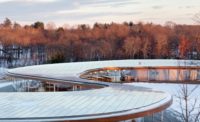NCARB Releases Report on Covid-19’s Impact on Licensure

Image Courtesy of NCARB

Image courtesy of NCARB


Since the U.S. first felt the effects of the pandemic last spring, architects and recent grads have faced novel challenges including project delays, broad sweeping unemployment, and safely designing to adapt existing spaces. The National Council of Architectural Registration Board (NCARB) has published a 2021 special report measuring various factors to analyze Covid-19’s impact on the profession. NCARB metrics measure progress through the Architectural Experience Program (AXP), Architect Registration Examinations (ARE), license applications, newly licensed architects, and early-career experiences by comparing 2020 data to averages over the previous three years. The report also considered transitions to remote work, dwindling demand, changes to daily work, postponed architectural plans, test center closures, reduced access to programs, and limited early career experiences.
NCARB’s findings demonstrated an overall drop in national licensing exams taken or completed, experience gleaned, licenses pursued or achieved, and new architects minted. Creating an NCARB record is often the first step on the path to licensure, because candidates use their record to document their professional experience (AXP) and examination requirements (ARE). With fewer entry-level roles and career opportunities in 2020, 33% fewer candidates even started an NCARB record. Due in part to the shuttering of many testing centers and lack of exam deliveries, AREs taken decreased 44%—those completed diminished 42%. License applications saw a similar reduction of 39% (although reciprocal or out-of-state licenses only dipped 3%). Last year, overall, recently initiated architects declined by 40%. Even those attempting to practice saw limited access to professional experiences; with an uncertain economy on the horizon, AXP-reported work experiences decreased by 20%.
But despite falling numbers, metrics have now either returned to pre-Covid levels or improved—as did recent AIA billings—signifying a potential period of growth for the profession as the U.S. begins to emerge from the pandemic.






